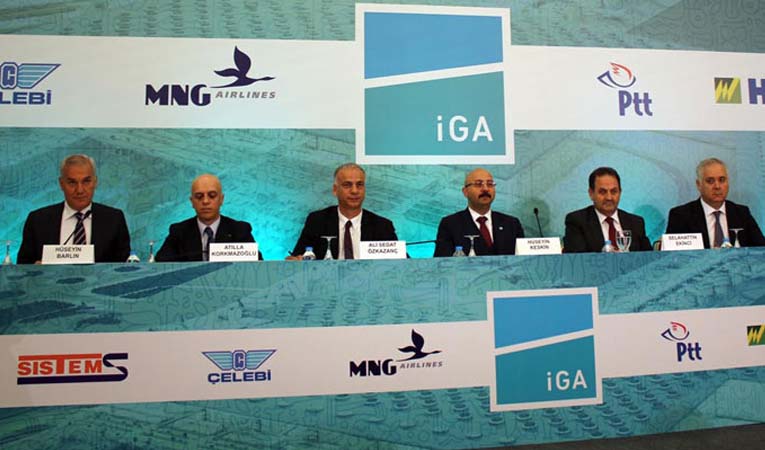
-
BIST 100
 11341,09%0,48En Düşük11307,70En Yüksek11385,18
11341,09%0,48En Düşük11307,70En Yüksek11385,18 -
DOLAR
 42,73%0,04Alış42,7287Satış42,7387En Yüksek42,7518
42,73%0,04Alış42,7287Satış42,7387En Yüksek42,7518 -
EURO
 50,37%0,36Alış50,3650Satış50,3725En Yüksek50,3794
50,37%0,36Alış50,3650Satış50,3725En Yüksek50,3794 -
EUR/USD
 1,18%0,12Alış1,1753Satış1,1754En Yüksek1,1756
1,18%0,12Alış1,1753Satış1,1754En Yüksek1,1756 -
ALTIN
 5959,21%-0,06Alış5958,51Satış5959,90En Yüksek5968,75
5959,21%-0,06Alış5958,51Satış5959,90En Yüksek5968,75
-
BIST 100
 11341,09%0,48En Düşük11307,70En Yüksek11385,18
11341,09%0,48En Düşük11307,70En Yüksek11385,18 -
DOLAR
 42,73%0,04Alış42,7287Satış42,7387En Yüksek42,7518
42,73%0,04Alış42,7287Satış42,7387En Yüksek42,7518 -
EURO
 50,37%0,36Alış50,3650Satış50,3725En Yüksek50,3794
50,37%0,36Alış50,3650Satış50,3725En Yüksek50,3794 -
EUR/USD
 1,18%0,12Alış1,1753Satış1,1754En Yüksek1,1756
1,18%0,12Alış1,1753Satış1,1754En Yüksek1,1756 -
ALTIN
 5959,21%-0,06Alış5958,51Satış5959,90En Yüksek5968,75
5959,21%-0,06Alış5958,51Satış5959,90En Yüksek5968,75
- Anasayfa
- Sektörler
- Diğer Sektörler
- The Leaders At Increasing Their Market Share
The Leaders At Increasing Their Market Share
Last year there was intense competition in terms of market share. From automotives to white goods, GSMs and banking, a large number of companies from many sectors applied various strategies as they...
Last year there was intense competition in terms of market share. From automotives to white goods, GSMs and banking, a large number of companies from many sectors applied various strategies as they struggled to get ahead in a contracting market. Some lost this war, while others won, even took over the leadership of the sector. Capital put 17 sectors under the microscope identified the champions after a difficult year at raising their market shares in different sectors. It also studied the strategies and applications that enabled them to achieve success.
.gif) 2008 has gone down in the history of the world economy as a crisis year when consumer preferences changed and forced change.
2008 has gone down in the history of the world economy as a crisis year when consumer preferences changed and forced change.
One of those who gained the largest share of the market in this critical environment was Hyundai. Moreover, it achieved this without cutting prices. How? In 2009, the South Korean Hyundai launched a campaign in America entitled “Peace of Mind” which was precisely what was needed in the crisis. Along with this slogan, it gave the following message:
“Buy a new Hyundai. If you lose your job as a result of the crisis, Hyundai takes back your car without leaving any question marks in your mind. It enables you to move freely without looking behind you.”
This strategy enabled Hyundai to record a success story. Its sales rose by 27 percent and its market share increased from 3.1 percent to 4.3 percent.
The company recorded a similar performance in Turkey. After being the second largest player, it finally succeeded after many years in toppling Renault from its throne.
Report Cards From 17 Sectors
It was not just Hyundai, in 2009 many companies and brands applied various strategies in order to steal a lead in market share. In addition to automotives, there was intense competition in white goods, GSMs, consumer electronics, technology retailing, air transportation, banking, insurance and private pensions. Capital put 17 sectors under the microscope and indentified the champions at increasing their market shares.
According to the results of our survey, out of the 17 sectors, it was automotive companies who recorded the largest increase in their market shares. In the light commercial vehicles segment, Fiat was the leader with a 11.2 percentage points increase in its market share, while in passenger cars Hyundai was the most aggressive with a 7.1 percentage points increase. In flat screen television, LG was the champion in its own sector in terms of the growth in its market share, which it increased by 5.9 percentage points during the year from 8 percent.
BSH, which was second in the white goods sector, where there is intense competition and very strong players, added 2 percentage points to take its market share to 28 percent.
In technology retailing, which has witnessed a rapid influx of new players in recent years, the sector leader Teknosa increased its market share from 12 percent to 14 percent during 2009, becoming the fastest growing in the sector.
Those Who Know That A Crisis Is An Opportunity Are Those Who Win
So, in a period when sectors were contracting and it was most difficult to achieve targets, how did these companies succeed in increasing their market share?
Experts say that the common characteristic of the companies who came to the fore in market share is that they were alert during the crisis, regarded existing conditions as opportunities and succeeded in creating a difference by adapting quickly to the new conditions.
Mark Billige, a partner at Simon Kucher & Partners, says that those who regarded 2009 as a year of golden opportunities rewrote the rules in their sectors, commenting: “These companies redefined their business and pricing models to such an extent that they were successful while their rivals were unsuccessful. They added their rivals’ losses to their own gains.”
Nükhet Vardar, the founder of El İzi Consulting, says that when one looks at those who succeeded in increasing their market share, they all applied themselves effectively rather than remaining passive.
Prof. Dr. Ramazan Aktaş from TOBB University says that those who increased their market shares focused on retaining existing customers rather than sales. “During this period those which were brands emphasized on holding onto customers rather than declining customer loyalty. Those who were strong in terms of liquidity tried to take customers off the others,” he said.
Who Lost Market Share?
Those Who Lost In Automotives
In the light commercial vehicles segment of the automotive sector, Volkswagen lost the most market share at 4.5 percentage points. Mitsubishi lost 3.2 percentage points in light commercial vehicles in 2009 and saw its market share fall to 2.2 percent. In the passenger car segment, Honda recorded the largest decline at 2.43 percentage points. It was followed by Opel with a loss of 1.97 percentage points.
Sony Ericsson’s Share Fell To 1.2 Percent
In mobile telephones it was Sony Ericsson which suffered the most serious loss. During the first 10 months of 2009, the company’s market share declined by 4.9 percentage points compared with the same period the previous year. After taking a 6.1 percent market share in 2008, its share fell to 1.2 percent in 2009.
Akpet Lost Out In Fuels
In the fuels sector it was Opet which gained the most in the market share wars, while the biggest loser was Akpet/Lukoil. The company had a 4.07 percent market share in 2008, while fell by 0.73 percentage points in the competitive environment of 2009 to a market share of 3.34 percent.
Nilüfer Gözütok
[email protected]
Türkiye ve dünya ekonomisine yön veren gelişmeleri yorulmadan takip edebilmek için her yeni güne haber bültenimiz “Sabah Kahvesi” ile başlamak ister misiniz?






